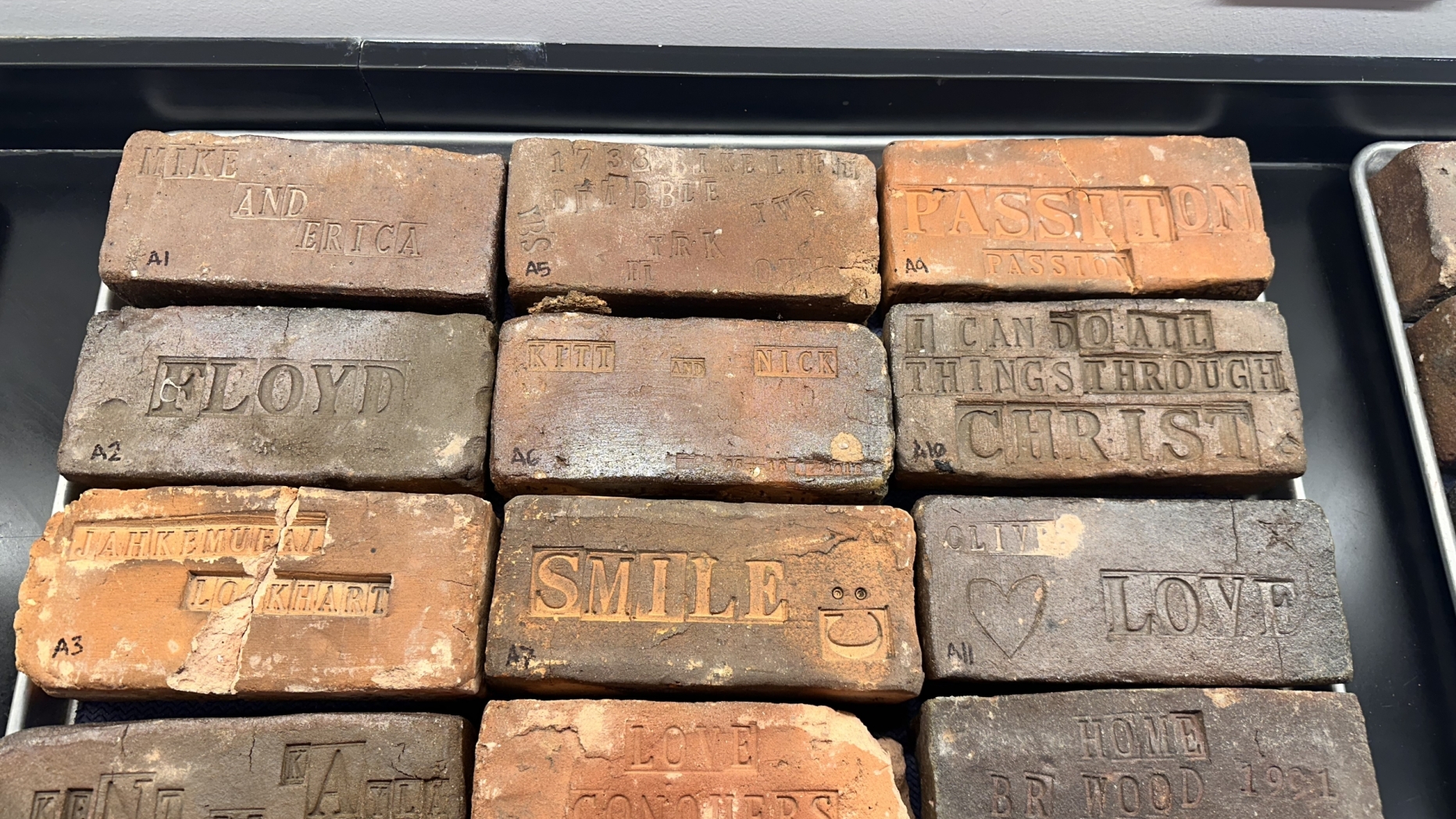Amanda “Ani” Barnette | Architectural Conservation Lab
Philadelphia, Pennsylvania

The samples given to the ACL by the Baltimore Community Brick Project for compression analysis
Stuart Weitzman School of Design
102 Meyerson Hall
210 South 34th Street
Philadelphia, PA 19104

The samples given to the ACL by the Baltimore Community Brick Project for compression analysis
This summer I worked alongside José Hernandez at the Architectural Conservation Laboratory (ACL) at the University of Pennsylvania. I worked on a multitude of different collections projects like the Historic Building Materials Collection, analysis for the Sands and Aggregates Library, and cataloging the Walker Zanger Natural Stone Library. I used techniques I learned from Conservation Science, Digital Media, and archival and research techniques from Documentation I.
Each collection is in a different stage than the other. This allowed for a variety of collection analysis over the course of my internship. The Historic Building Materials Collection (HBMC) is an expansive collection of historic material that is from multiple historic buildings and sites from all over the world. I spent time brushing up on my knowledge in programs like Excel, Photoshop, and InDesign for this collection. I spent time cataloguing and photographing the samples from our expansive collection to further upload them to the HBMC section of the ACL website.
A similar project was the Walker Zanger Natural Stone Library located in the basement of the Center for Architectural Conservation. I was continuing the work of José Hernandez and recent HSPV graduate Siqi Zhao in cataloguing and organizing the stones by giving them their own identification number using the program Access. José and I also catalogued and have gone through the various literature sources that came with the collection. The sources are now located in the office in the ACL for further research into the types of stones in the collection.
The Sands and Aggregates Collection is a collection of a hundred samples of sands that are from multiple sites the Center of Architectural Conservation has worked on as well as sample reference sets. I selected nine samples to begin sieve analysis to assess particle size distribution for each sample selected. Each sample washed, filtered, dried, and sieved with a mechanical sieve to ensure proper sieve techniques. Each sample got a photoshoot under the Leica Microscope for each sieve and the bulk sample. This will later be on the Sand and Aggregate Collection’s website where you can search each sample by particle size and particle distribution.
I met a multitude of different professionals that used the laboratory facilities like Roy Ingraffia, the DUMO Lab Research team, and the team from the Baltimore Community Brick Factory Project. While taking my breaks on campus, I also met one of the many UPenn squirrels that stole my snacks on break. Overall, I am looking forward to using my experience in the lab to further my education this upcoming school year and further into my career.